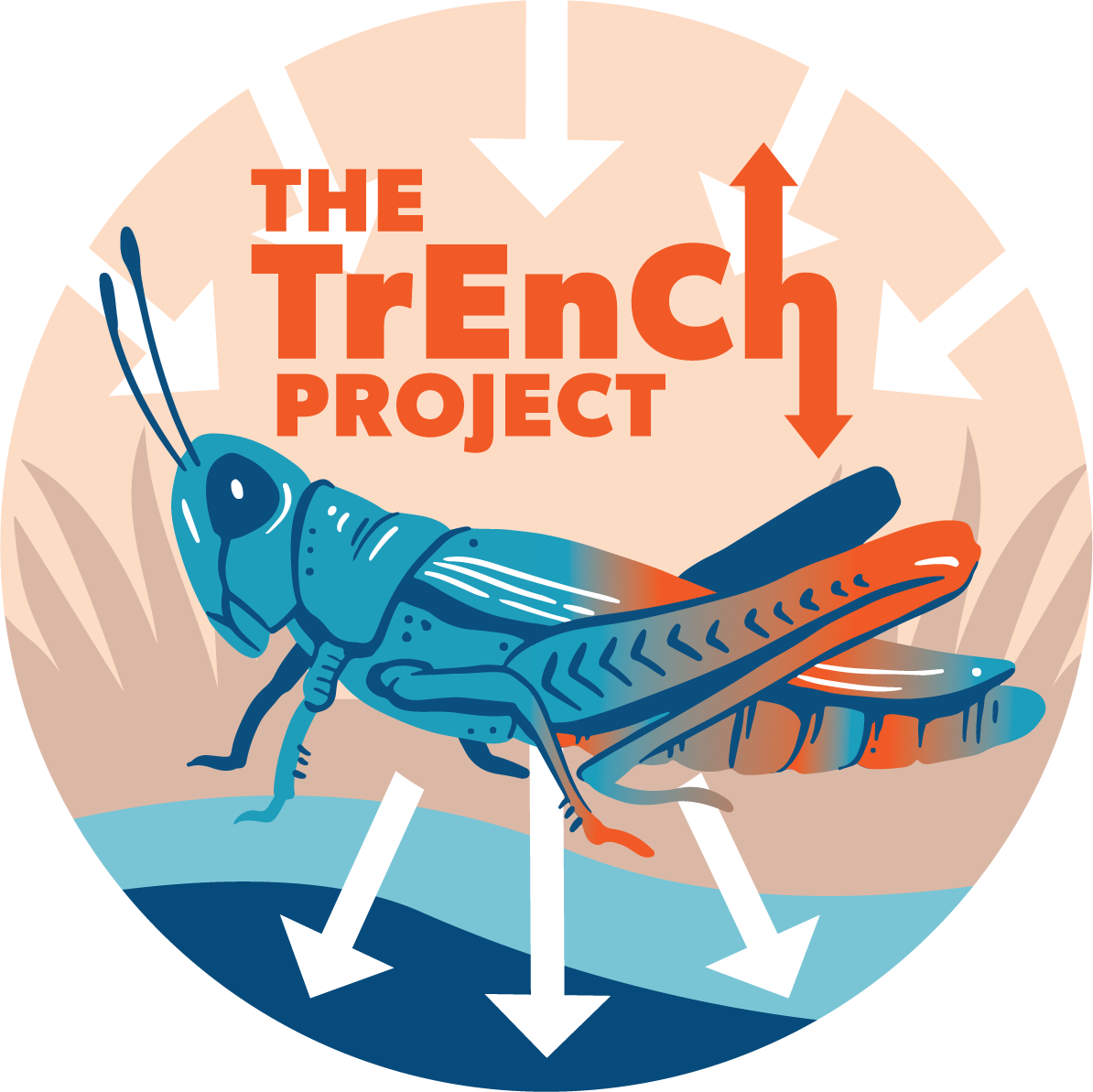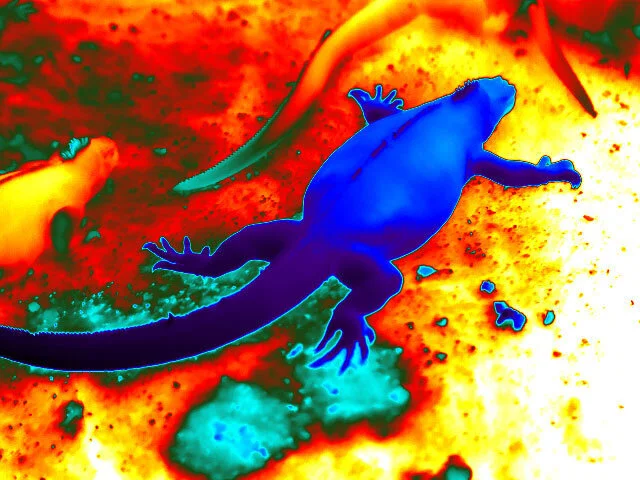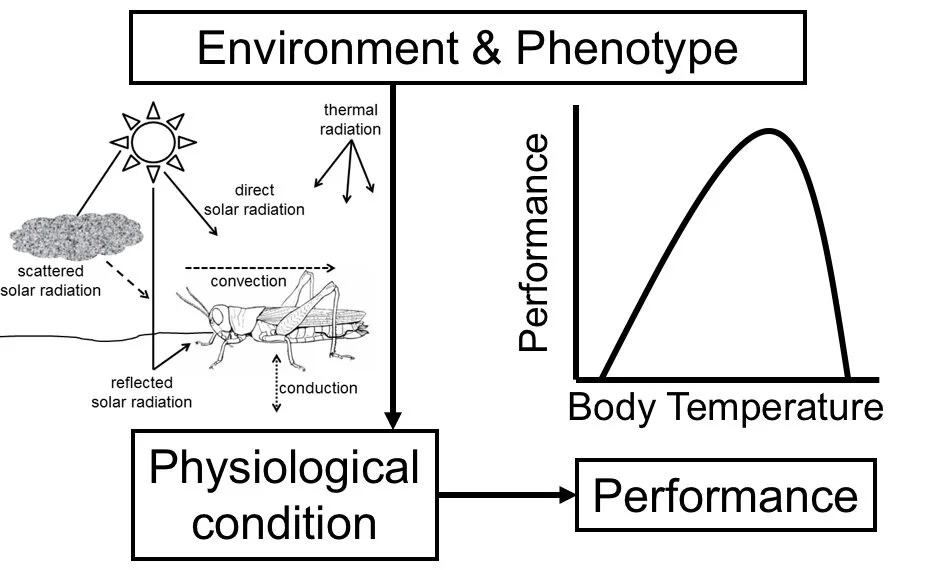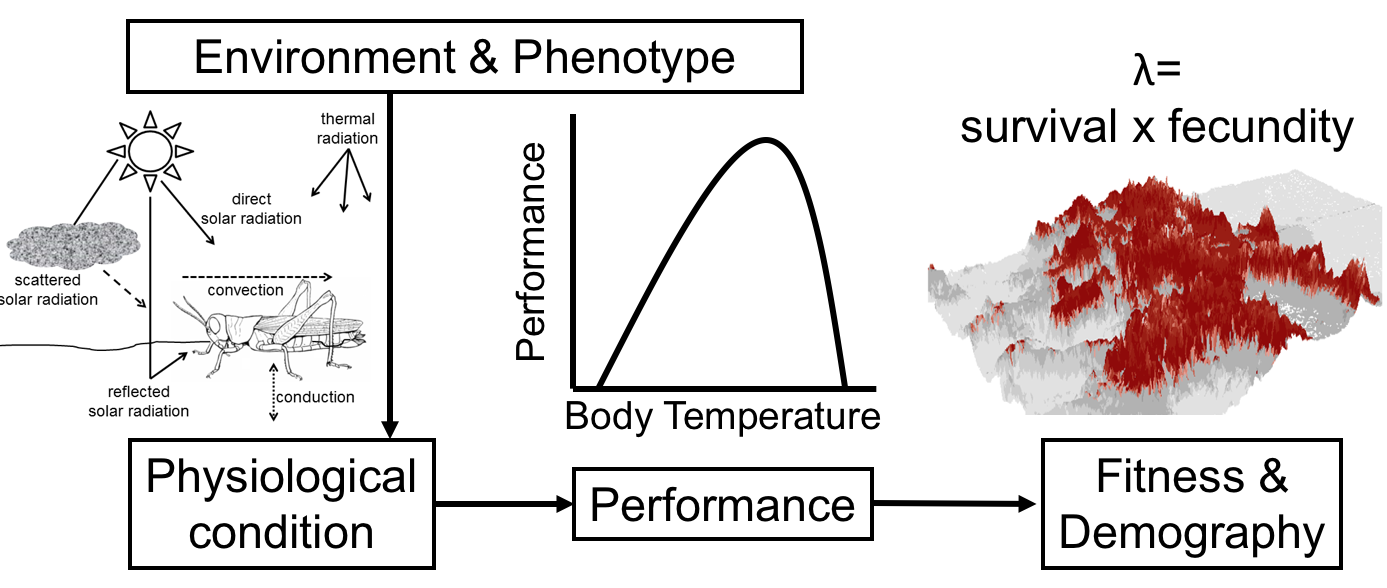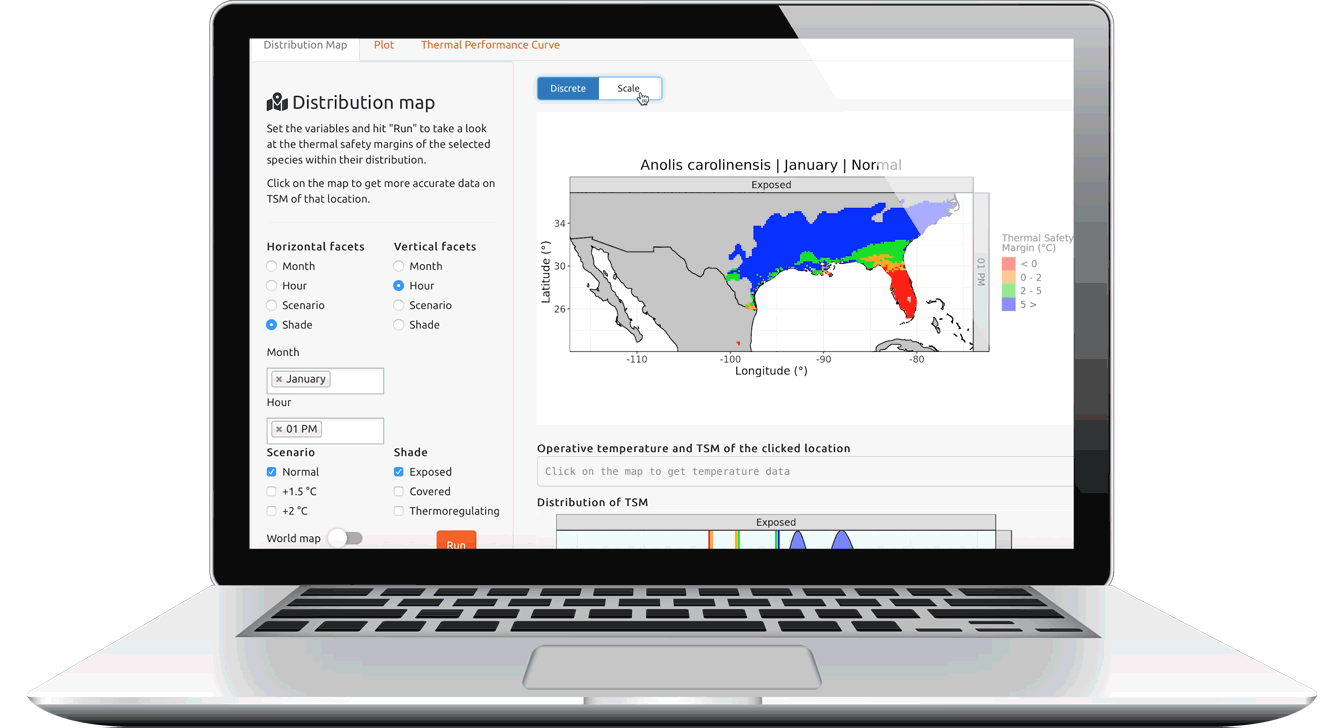MicroclimAte and BIOPHYSICAL MODELING
Translating air temperature into metrics that matter.
Species continue to respond to climate change in unexpected ways. For example, we have seen ranges shift and population abundances change in directions opposite of what models predict. Such surprises highlight the need to improve climate change models by translating our typical climate metrics (i.e. air temperature) into variables that better reflect how plants, animals, and ecosystems experience their environment.
This is where biophysical models come into play.
This marine iguana is basking after foraging in the cool sea.
Radiation will soon elevate its body temperature above air temperature (photo: G. Tattersall)
